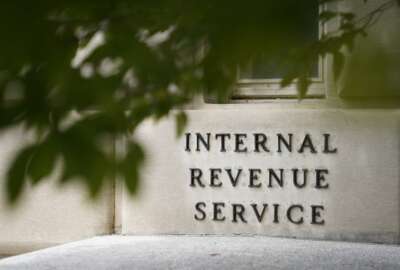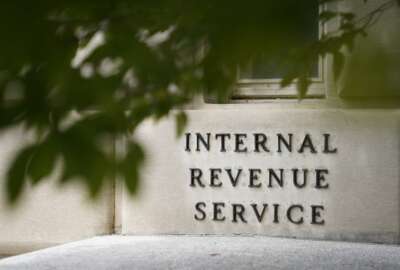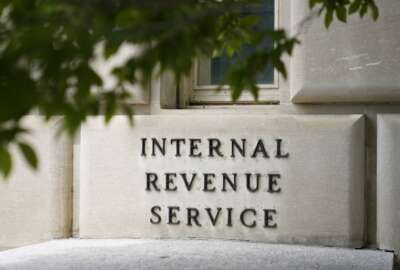IRS panel urges agency to promote Free File program before advancing its own alternative
An advisory panel of tax experts is urging the IRS to promote a long-running free program that lets taxpayers file their federal and state tax returns with private...
The IRS is looking to beta-test a free, online tax-filing platform that’s run by the agency during next year’s filing season.
But an advisory panel of tax experts is urging the IRS to promote a long-running free program that lets taxpayers file their federal and state tax returns with private tax professionals, before it scales up its own alternative.
The IRS announced in May it developed a “direct file” system prototype that would allow taxpayers to submit electronically filed tax returns directly to the agency. It also released a report to Congress outlining the feasibility of the IRS running its own e-file system.
But the Electronic Tax Administration Advisory Committee (ETAAC), in its own report to Congress, is telling lawmakers the IRS should improve public awareness of its Free File Alliance program with tax preparation companies, before it spends tens — or hundreds — of millions of dollars on the “direct file” prototype.
ETAAC Chairman Jared Ballew, director of government relations at Drake Software, said the committee recommends the IRS and Congress make improvements in the communication, marketing and accessibility of existing free tax filing programs, before spending substantial funds on a potentially “duplicative process.”
“There’s a significant cost to building a program like Direct File. It is not something that is just free or easy to do,” Ballew said in a recent interview. “Short-term, between now and January, [it] will be very difficult for the IRS to stand up something that could potentially have some sort of negative impact for taxpayers — whether that be state adoption, whether that be not being able to support low-income tax filers.”
IRS Commissioner Danny Werfel told reporters in May that the IRS has not yet finalized how many individuals will participate in the IRS’s Direct File pilot next year.
But ETAAC is urging the IRS to build up participation in the Free File program before investing considerable resources in the Direct File system. Only a small fraction of eligible taxpayers are making use of the Free File program.
“With the Inflation Reduction Act (IRA), the IRS finally has a proper allocation of funds to upgrade its technology platforms, improve the taxpayer experience and provide servicing that all Americans expect,” the committee wrote in its report. “ETAAC believes that the IRS should focus and execute successfully on their strategic plan with the IRA funds, while promoting the existing free options that already exist for taxpayers.”
About 70% of Americans are eligible to file electronically using the IRS’s Free File program, but a GAO report from April 2022 found that only 4 million individuals, or about 4% of all eligible taxpayers, used the program to file their federal tax returns.
Ballew said that, based on interviews with both Free File partners and IRS officials, ETAAC found the IRS isn’t spending any funds to market the Free File program to the public.
“If you would spend money there, and measure the success of your marketing campaign for Free File, I think it would help them gauge and deliver Direct File, if that is what they choose to do going forward,” Ballew said.
In addition to the Free File Program, taxpayers are also able to file for free using the IRS’s Volunteer Income Tax Assistance (VITA) program, and the Tax Counseling for the Elderly (TCE) program.
Even if more taxpayers took advantage of options to electronically file their tax returns for free, Ballew said it would be difficult to convince taxpayers already using tax preparation software or a tax professional’s services to make the switch to an IRS-run service.
“It’s very similar to your physician. Most people trust their physician, they don’t want to switch, they don’t want to change, because they tell them their deepest, darkest secrets,” Ballew said. “On tax, when you’re sharing sensitive information, it’s the same way. People are very sensitive — it’s emotional, in a sense — when they’re doing those interactions. So trust is the driver.”
The Inflation Reduction Act, which initially gave the IRS $80 billion to rebuild its workforce and modernize its legacy IT, set aside $15 million to study the feasibility of creating its own Direct File platform.
Lawmakers eliminated about $20 billion in IRS multi-year funds from the Inflation Reduction Act, as part of a bipartisan deal to raise the debt ceiling and avoid a government default.
White House officials, however, told reporters in May that the reduction in funding won’t force the IRS to rethink its modernization strategy.
The IRS told Congress it would need to spend about $64 million a year to run its own direct file system, if the platform covered about 5 million users. The same system would cost the IRS about $249 million a year, if it had 25 million users.
The IRS expects customer support would account for about 50-84% of all costs, depending on how many taxpayers use the system.
ETAAC recommends that if a Direct File option is implemented, Congress and IRS should ensure it adheres to security standards implemented by the current Free File program.
The committee is also calling on the IRS to keep state revenue agencies in the loop with its IT modernization plans.
ETAAC wrote that Congress “has shifted the paradigm” by giving the IRS multi-year funds to complete long-deferred IT modernization projects. But Alabama Department of Revenue Commissioner Vernon Barnett said the IRS needs to keep state revenue agencies informed on its modernization plans.
“They’re, in effect, leading us into a new era of tax administration in so many ways, as they modernize their systems. And as they get better at what they do, we all need to stay synced up in this process, and we all need to know exactly what’s going on,” Barnett said.
Barnett said most state revenue services have modernized their own IT systems, but in such a way that those systems can interact with the IRS’ legacy IT.
“We have to stay synced up with them in order for tax administration to go smoothly overall. And so we need to know where we’re going. The IRS is modernizing, and we’re all big fans of them doing so. We need to know where they’re going, and how they’re going to get there, so that we can stay on this journey with them,” he said.
Barnett said the IRS, as it modernizes its IT systems, also needs to rethink the roles and workflows of its workforce.
“Those business processes are probably absolutely ideal for technology when it was acquired back in the 50s and 60s — it probably worked great. But a lot has changed since then, and you have to go and reassess that,” he said.
Barnett said the Alabama Revenue Service, through a combination of new IT and revamped business processes, now has a single employee completing tasks in about two hours, which used to take a team of five employees about two weeks to complete
The IRS, he added, may also need to retrain its workforce on new systems and processes.
“They may be a whiz on technology that’s 34 years old, but you have to teach them how to utilize the new technology to the fullest extent. That’s a process, and it doesn’t happen overnight, but it really pays a dividend,” Barnett said.
While ETAAC is urging the IRS to take a cautious approach to the possible rollout of a Direct File platform, House and Senate Democrats want to know how soon the IRS would roll out this direct-file platform to every taxpayer.
Sen. Elizabeth Warren (D-Mass.) led nearly 40 senators and more than 60 House lawmakers in asking the IRS for this update.
“We urge you to make this pilot of the direct file tool available to as many taxpayers as is feasible,
in order to deliver real value quickly to American taxpayers and demonstrate the value of
modernizing the IRS, while also gathering data to make improvements and to better serve
American taxpayers,” lawmakers wrote in a letter to Werfel. “We also know that next year’s pilot is only the first step toward the robust direct file system that Americans deserve.
Copyright © 2025 Federal News Network. All rights reserved. This website is not intended for users located within the European Economic Area.
Jory Heckman is a reporter at Federal News Network covering U.S. Postal Service, IRS, big data and technology issues.
Follow @jheckmanWFED







